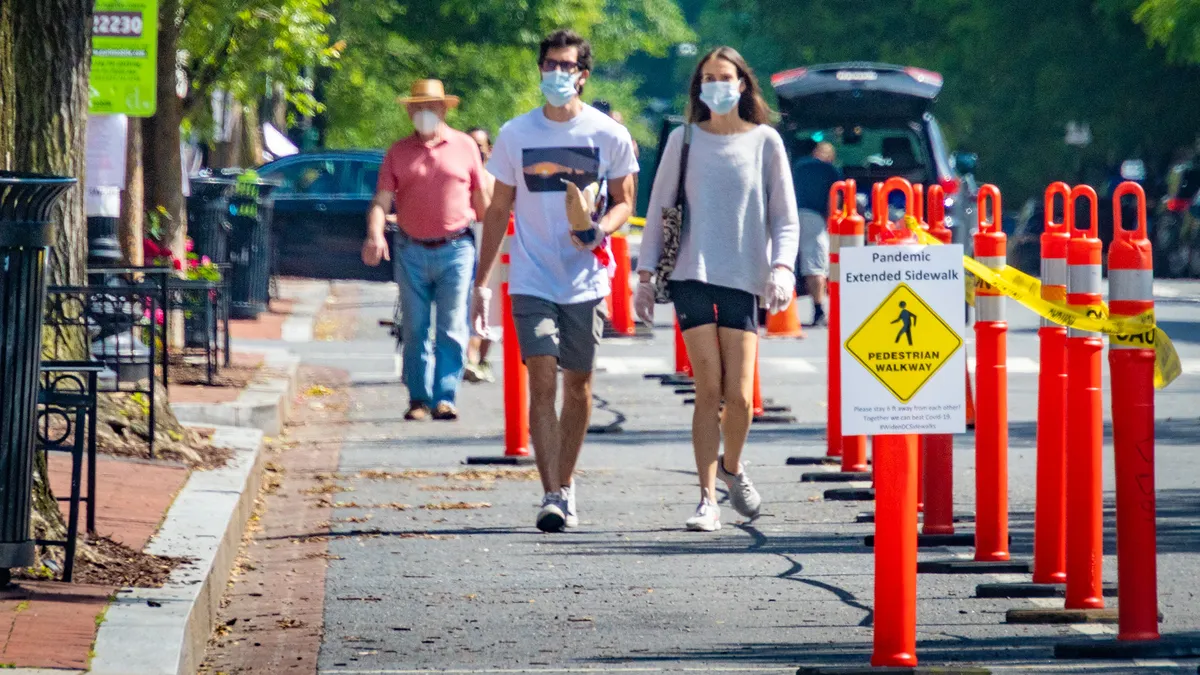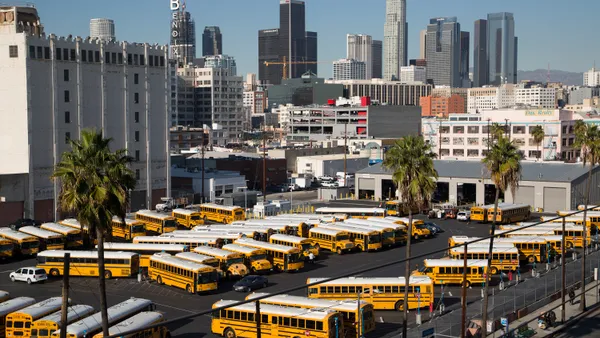Dive Brief:
- Illinois is in the midst of a $5 million public awareness campaign urging residents to wear a mask or face covering any time they're in public during the COVID-19 pandemic. The campaign, based on public opinion research, emphasizes the responsibility of mask wearing by comparing it to wearing a seat belt and football helmet.
- To design the campaign, Illinois relied on a creative focus message test from Chicago-based firm Civis Analytics. The online survey tested a variety of messages and found that the seat belt and helmet comparison was the only one that would make people more likely to wear a mask.
- The ads will run in English and Spanish through traditional and online media channels, and will be responsive to trends in cases and mobility. If COVID-19 cases rise in a county, platforms there will receive more funding than areas with lower cases and mobility.
Dive Insight:
More than 30 states, including Illinois, require masks in public, although compliance is still variable. According to the Civis Analytics survey, 66% of residents said they "always" wore a mask outside the home in the last seven days and 25% said they "sometimes" did, but those rates were lower in rural areas and outside of the greater Chicago area.
That means local governments need to spread the word to encourage mask wearing and other safety measures like social distancing and hand washing. Cities including New York and Austin, TX have released their own ads —Marketplace reports that a public competition for a mask ad received more than 600 entries — and others have used social media and TikTok to reach younger people.
Civis’ market research helped the state better target its message. "When you're talking about governments especially, the idea is to not spend money on an ad that doesn’t work, and to really not spend money on an ad that’s going to do the opposite of what you want," said Haleigh Miller, a senior solution architect with Civis who worked on the survey. That is especially true with an issue like mask wearing, which has become politicized and personal, Miller said.
The researchers polled 2,459 Illinois residents, who were either shown one of the five messages or were shown no message to act as a control group. Compared to the control group, the helmet and seat belt comparison ad showed a three percentage point increase in likelihood of wearing a mask — 92% of respondents said they would likely wear a mask compared to 89% in the control group. The message was also shown to be effective among residents with less than a college degree and those outside the Chicago area.
The other messages tested were one emphasizing the safety of family members, one warning about a second wave, one highlighting that mask wearing would help end lockdowns and one citing a World Health Organization statistic that masks can reduce COVID-19 spread by 85%. All showed either a neutral or negative impact compared to the control group — the statistic and lockdown ads showed a negative impact, but still within the margin of error.
"Just like every aspect of our coronavirus response, this campaign is rooted in the science and data," said Alex Hanns, a spokesperson for Illinois Gov. J.B. Pritzker. "This survey showed when it comes to mask usage, we have the most work to do with younger residents and those living in rural parts of the state. It also identified the most effective message: a mask is like a seatbelt, a helmet, or anything that keeps us safe — it only works if you wear it."











